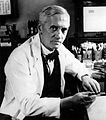Western culture
This article possibly contains original research. (May 2009) |
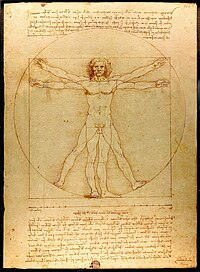
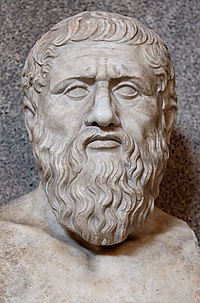
Western culture, sometimes equated with Western civilization, Western lifestyle or European civilization, is a term used very broadly to refer to a heritage of social norms, ethical values, traditional customs, belief systems, political systems, and specific artifacts and technologies. The term has come to apply to countries whose history is strongly marked by European immigration, such as the countries of The Americas, and the countries of Australasia, and is not restricted to the continent of Europe.
Western culture is characterised by a host of artistic, philosophic, literary, and legal themes and traditions; the heritage of Celtic, Germanic, Hellenic and Latin ethnic and linguistic groups; Christianity, which has played an important part in the shaping of Western civilization since at least the 4th century[1][2] as has, in ancient times and then in renaissance times onwards, a tradition of rationalism in various spheres of life, developed by Hellenistic philosophy, Scholasticism, humanism, the Scientific Revolution and the Enlightenment. Values of Western culture have, throughout history, been derived from: political thought, widespread employment of rational argument favouring freethought; assimilation of human rights; the need for equality; and democracy.[3]
Historical records of Western culture in Europe begin with Ancient Greece and Ancient Rome. Western culture developed with Christianization during the European Middle Ages, with the reform and modernization triggered by the Renaissance, and with globalization by successive European empires, that spread European ways of life and European educational methods around the world between the 16th and 20th centuries.[4] European culture developed with a complex range of philosophy, medieval scholasticism and mysticism, and Christian and secular humanism. Rational thinking developed through a long age of change and formation, with the experiments of the Enlightenment, and breakthroughs in the sciences. With its global connection, European culture grew with an all-inclusive urge to adopt, adapt, and ultimately influence other cultural trends around the world.[5]
Tendencies that have come to define modern Western societies include the existence of political pluralism, prominent subcultures or countercultures (such as New Age movements), and increasing cultural syncretism - resulting from globalization and human migration.
Terminology
The Greeks contrasted themselves to their Eastern neighbors, such as the Trojans in Iliad, setting an example for later contrasts between east and west. In the Middle Ages, the Near East provided a contrast to the West, though Hellenized since the time of Alexander the Great, and ruled from Rome and Constantinople.
In the late 20th to early 21st century, with increasing globalism, it has become more difficult to determine which individuals fit into which category, and the East–West contrast is sometimes criticized as relativistic and arbitrary.[6][7][8]
Globalism has spread Western ideas so widely that almost all modern cultures are, to some extent, influenced by aspects of Western culture. Recent stereotyped views of "the West" have been labelled Occidentalism, paralleling Orientalism - the term for the 19th century stereotyped views of "the East".
Boundaries of countries that constitute "the West" remain unclear. Geographically, the "West" of today would include Western Europe together with certain territories belonging to the Anglosphere, the Hispanidad, the Lusofonia or the Francophonie.[citation needed]
History
| Part of a series on |
| Philosophy |
|---|
Western culture is neither homogeneous nor unchanging. As with all other cultures it has evolved and gradually changed over time. All generalities about it have their exceptions at some time and place. The organisation and tactics of the Greek Hoplites differed in many ways from the Roman legions. The polis of the Greeks is not the same as the American superpower of the 21st century. The gladiatorial games of the Roman Empire are not identical to present-day football. The art of Pompeii is not the art of Hollywood. Nevertheless, it is possible to follow the evolution and history of the West, and appreciate its similarities and differences, its borrowings from, and contributions to, other cultures of humanity.
Concepts of what is the West arose out of legacies of the Western Roman Empire and the Eastern Roman Empire. Later, ideas of the west were formed by the concepts of Christendom and the Holy Roman Empire. What we think of as Western thought today originates primarily from Greco-Roman influences, and includes the ideals of the Renaissance and the Enlightenment, as well as Christian culture.
The Classical West

In Homeric literature, and right up until the time of Alexander the Great, for example in the accounts of the Persian Wars of Greeks against Persians by Herodotus, we see the paradigm of a contrast between the West and East.
Nevertheless the Greeks felt they were the most civilized and saw themselves (in the formulation of Aristotle) as something between the wild barbarians of most of Europe and the soft, slavish Middle-Easterners. Ancient Greek science, philosophy, democracy, architecture, literature, and art provided a foundation embraced and built upon by the Roman Empire as it swept up Europe, including the Hellenic World in its conquests in the 1st century BC. In the meantime however, Greece, under Alexander, had become a capital of the East, and part of an empire.
For about five hundred years, the Roman Empire maintained the Greek East and consolidated a Latin West, but an East-West division remained, reflected in many cultural norms of the two areas, including language. Although Rome, like Greece, was no longer democratic, the idea of democracy remained a part of the education of citizens, as if the emperors were a temporary emergency measure.
Eventually the empire came to be increasingly officially split into a Western and Eastern part, reviving old ideas of a contrast between an advanced East, and a rugged West. In the Roman world one could speak of three main directions; North (Celtic tribes and Parthians), the East (lux ex oriente), and finally South which implied danger, historically via the Punic wars (Quid novi ex Africa?) The West was peaceful – it contained only the Mediterranean.
Christianity emerged from Judaism on the eastern shore of the Mediterranean, and both spread around the Roman world, with Christianity being the more popular religion. With the rise of Christianity, much of Rome's tradition and culture were reshaped by that religion, and transformed into something new, which would serve as the basis for the development of Western civilization after the fall of Rome. Also, Roman culture mixed with the pre-existing Celtic, Germanic and Slavic cultures, which slowly became integrated into Western culture starting, mainly, with their acceptance of Christianity.
The Medieval West

The Medieval West was at its broadest the same as Christendom, including both the "Latin" or "Frankish" West, and the Orthodox Eastern part, where Greek remained the language of empire. After the crowning of Charlemagne, Charlemagne's part of Europe was referred to by its neighbors in Byzantium and the Muslim world as "Frankish".
After the fall of Rome much of Greco-Roman art, literature, science and even technology were all but lost in the western part of the old empire, centered around Italy, and Gaul (France). However, this would become the centre of a new West. Europe fell into political anarchy, with many warring kingdoms and principalities. Under the Frankish kings, it eventually, and partially, reunified, and the anarchy evolved into feudalism. Charlemagne was crowned Emperor of the Romans by the Pope in 800. His reign is associated with the Carolingian Renaissance, a revival of art, religion, and culture through the medium of the Catholic Church. Through his foreign conquests and internal reforms, Charlemagne helped define both western Europe and the Middle Ages. He is numbered as Charles I in the regnal lists of France, Germany (where he is known as Karl der Große), and the Holy Roman Empire. The re-establishment of a Western "Roman" imperium challenged the status of the Eastern Roman Emperor in Constantinople and strained relations between them.
Much of the basis of the post-Roman cultural world had been set before the fall of the Empire, mainly through the integration and reshaping of Roman ideas through Christian thought. The Greek and Roman paganism had been completely replaced by Christianity around the 4th and 5th centuries, since it became the official State religion following the baptism of emperor Constantine I. Roman Catholic Christianity and the Nicene Creed served as a unifying force in Christian parts of Europe, and in some respects replaced or competed with the secular authorities. Art and literature, law, education, and politics were preserved in the teachings of the Church, in an environment that, otherwise, would have probably seen their loss. The Church founded many cathedrals, universities, monasteries and seminaries, some of which continue to exist today. In the Medieval period, the route to power for many men was in the Church.
In a broader sense, the Middle Ages, with its fertile encounter between Greek reasoning and Levantine monotheism was not confined to the West but also stretched into the old East. The philosophy and science of Classical Greece was largely forgotten in Europe after the collapse of the Western Roman Empire, other than in isolated monastic enclaves (notably in Ireland, which had become Christian but which was never conquered by Rome).[9] Although the Byzantine Emperor Justinian (the last Emperor to speak Latin as a first tongue) closed the Academy in AD 529 (a date that is often cited as the end of Antiquity), the learning of Classical Antiquity was better preserved in the Byzantine Eastern Roman Empire, whose capital at Constantinople stood for another millennium, before being captured by the Ottoman Turks. Justinian's Corpus Juris Civilis Roman civil law code was preserved in the East and Constantinople maintained trade and intermittent political control over outposts such as Venice in the West for centuries. Classical Greek learning was also subsumed, preserved and elaborated in the rising Eastern world, which gradually supplanted Roman-Byzantine control over the Mediterranean, Middle East, North Africa, Iberia and even Greece itself – becoming a dominant cultural-political force in those regions. Thus, from the margins of the Roman world much of the learning of classical antiquity was slowly reintroduced to European civilisation in the centuries following the collapse of the Western Roman Empire. Irish missionaries such as St Columba propagated the learning of Christianity and Latin in Christianised parts of Europe during the Early Medieval Period and Byzantine Greeks and Arabs reintroduced texts from Antiquity into Europe during the Late Middle Ages and Renaissance of the 12th century, in Italy and Spain.


The rediscovery of the Justinian Code in Western Europe early in the 10th century rekindled a passion for the discipline of law, which crossed many of the re-forming boundaries between East and West. Eventually, it was only in the Catholic or Frankish west, that Roman law became the foundation on which all legal concepts and systems were based. Its influence can be traced to this day in all Western legal systems (although in different manners and to different extents in the common (England) and the civil (continental European) legal traditions). The study of canon law, the legal system of the Catholic Church, fused with that of Roman law to form the basis of the refounding of Western legal scholarship. The ideas of civil rights, equality before the law, equality of women, procedural justice, and democracy as the ideal form of society were principles which formed the basis of modern Western culture.
The West actively encouraged the spreading of Christianity, which was inexorably linked to the spread of Western culture. The rise of a competing culture, that of Islam, caused Europeans to react, often militarily, but also in other ways. Europeans translated many Arabic texts into Latin during the Middle Ages. Later, with the fall of Constantinople and the Ottoman conquest of the Byzantine Empire, followed by a massive exodus of Greek Christian priests and scholars to Italian cities such as Venice, bringing with them as many scripts from the Byzantine archives as they could, scholars' interest for the Greek language and its classic works, topics and lost files, was revived. This revival eventually led to the beginnings of the Renaissance. From the late 15th century to the 17th century, Western culture began to spread to other parts of the world through the vehicle of intrepid explorers and missionaries during the Age of Discovery, and by imperialists from the 17th century to the early 20th century.
The Modern Era

Coming into the modern era, the historical understanding of the East-West contrast – as the opposition of Christendom to its geographical neighbors – began to weaken. As religion became less important, and Europeans came into increasing contact with far away peoples, the old concept of Western culture began a slow evolution towards what it is today. The Early Modern "Age of Discovery," first led by Portugal and Spain in the 15th and 16th centuries with France and England following in the 17th century, faded into the "Age of Enlightenment" of the 18th century, characterized by the military advantage of Europeans from the development of firearms and other military technologies. The "Great Divergence" became more pronounced, making the West the bearer of science and the accompanying revolutions of technology and industrialisation. Western political thinking also spread rapidly and in many forms around the world. With the early 19th century "Age of Revolution", the West entered a period of empires, massive economic and technological advance, and bloody international conflicts, that continued into the 20th century.
As Europe discovered the wider world, old concepts adapted. The area that had formerly been considered "the Orient" ("the East") became the "Near East", as the interests of the European powers interfered with Qing China and Meiji Japan for the first time, in the 19th century.[10] Thus, the Sino-Japanese War in 1894–1895 occurred in the "Far East", while the troubles surrounding the decline of the Ottoman Empire simultaneously occurred in the "Near East".[11] The term "Middle East", in the mid-19th century, included the territory east of the Ottoman empire but West of China - i.e. Greater Persia and Greater India, but is now used synonymously with "Near East" in most languages.
Cultural forms
Some cultural and artistic modalities are characteristically Western in origin and form. While dance, music, visual art, story-telling, and architecture are human universals, they are expressed in the West in certain characteristic ways.
In Western dance, music, plays and other arts, the performers are only very infrequently masked. There are essentially no taboos against depicting a god, or other religious figures, in a representational fashion.

Music

The symphony, concerto, sonata, opera and oratorio have their origins in Italy. Many important musical instruments used by cultures all over the world were also developed in the West; among them are the violin, piano, pipe organ, saxophone, trombone, clarinet, and the theremin. The solo piano, symphony orchestra and the string quartet are also important performing musical forms.
Historically, the main forms of Western music are European folk, choral, classical, country, rock and roll, hip-hop, and electronica.
Many forms of popular music have been derived from African-Americans, and their innovations of jazz and blues serve as the basis from which much of modern popular music was derived. Folklore and music during 20th and 19th centuries, initially by themselves, but later played and further developed together with White & Black Americans, British people, and Westerners in general. These include jazz, blues and rock music (that in a wider sense include the rock and roll and heavy metal genres), rhythm and blues, funk, Hip-Hop, techno as well as the ska and reggae genres from Jamaica. Several other related or derived styles were developed and introduced by Western pop culture such as pop, metal and dance music.
Other well-known Western musical genres include the music played by Mexican mariachis, the Argentine and Uruguayan tango, North American jazz and Brazilian bossa nova.
Painting and photography

Jan van Eyck, among other renaissance painters, made great advances in oil painting, and perspective drawings and paintings had their earliest practitioners in Florence.[12] In art, the Celtic knot is a very distinctive Western repeated motif. Depictions of the nude human male and female in photography, painting and sculpture are frequently considered to have special artistic merit. Realistic portraiture is especially valued.
Photography, and the motion picture as both a technology and basis for entirely new art forms, were also developed in the West.
Dance and performing arts

The ballet is a distinctively Western form of performance dance.[13] The ballroom dance is an important Western variety of dance for the elite. The polka, the square dance, and the Irish step dance are very well known Western forms of folk dance.
The soap opera, a popular culture dramatic form, originated in the United States first on radio in the 1930s, then a couple of decades later on television. The music video was also developed in the West in the middle of the 20th century.
Literature
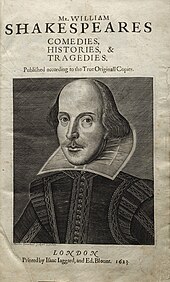
While epic literary works in verse such as the Mahabarata and Homer's Iliad are ancient and occurred worldwide, the novel as a distinct form of story telling only arose in the West[14] in the period 1200 to 1750.
Architecture
Important Western architectural motifs include the Doric, Corinthian, and Ionic columns, and the Romanesque, Gothic, Baroque, and Victorian styles are still widely recognised, and used even today, in the West. Much of Western architecture emphasizes repetition of simple motifs, straight lines and expansive, undecorated planes. A modern ubiquitous architectural form that emphasizes this characteristic is the skyscraper, first developed in New York and Chicago.
-
The architecture of the White House deliberately recalls ancient Greek temples.
-
Skyscrapers. The Willis Tower (pictured).
Religion
Western culture, for at least the last 1000 years, has been considered to be nearly synonymous with Christian culture.[15] Before this time many Europeans from the north, especially Scandinavians, remained polytheistic, though southern Europe was predominately Christian from the 5th century onwards. The native religions of Europe were polytheistic and far from homogenous. Roman religion was similar to but distinct from Hellenic religion.
As the centralized Roman power waned in southern and central Europe, the dominance of the Catholic Church was the only consistent force in Europe.[16] Therefore, until the Age of Enlightenment,[17] Christian culture took over as the predominant force in western civilization, guiding the course of philosophy, art, and science for many years.[18][19] Movements in art and philosophy, such as the Humanist movement of the Renaissance and the Scholastic movement of the High Middle Ages, were motivated by a drive to connect Catholicism with Greek and Arab thought imported by Christian pilgrims.[20][21][22] However, due to the division in Christianity caused by the Protestant reformation and the Enlightenment, religious influence - especially the temporal power of the Pope - began to wane.[23][24]
As in the middle east Jewish religion is found in the Western world. As a minority group, Jews often had to contend with discrimination, including getting expelled or banned from various polities, while finding havens in other places.
Religion has waned considerably in Europe, where many are today agnostic or atheist. Christianity remains the dominant religion in the Western world, with approximately 70% of religious Europeans Christian.[25] In one survey, 76.2% of religious Europeans considered themselves Christians,[26] 86.0% of citizens of the Americas[27] and 73.36% in Oceania still practice Christianity.[25] In terms of irreligion, over half of the populations of the Czech Republic (79.4% of the population was agnostic, atheist or irreligious), the United Kingdom (44–54%), Germany (41–49%), France (43–54%) and the Netherlands (39–44%) are agnostic, atheist, or otherwise non-religious. Religious belief in the United States remains strong; about 75–85% of the population identified themselves as religious in one 2005 survey.[28] Most of Latin America also remains religious, where according to a 2005 survey, about 70% of the Latin American population consider themselves Catholic.[29][30]
Sport


Since Classical Antiquity, sport has been an important facet of Western cultural expression. A wide range of sports were already established by the time of Ancient Greece and the military culture and the development of sports in Greece influenced one another considerably. Sports became such a prominent part of their culture that the Greeks created the Olympic Games, which in ancient times were held every four years in a small village in the Peloponnesus called Olympia.[31] Baron Pierre de Coubertin, a Frenchman, instigated the modern revival of the Olympic movement.[32] The first modern Olympics were held at Athens in 1896.
The Romans built immense structures such as the Colisseum in Rome to house their festivals of sport. The Romans exhibited a passion for blood sports, as in the infamous Gladiatorial battles which pitted contestants against one another in a fight to the death. The Olympic Games revived many of the sports of Classical Antiquity - such as Greco-Roman wrestling, discus and javelin. The sport of bullfighting is a traditional spectacle of Spain, Portugal, southern France and some Latin American countries which traces its roots to prehistoric bull worship and sacrifice and is often linked to Rome, where many human-versus-animal events were held. Bullfighting spread from Spain to its Central and South American colonies, and in the 19th century to France, where it developed into a distinctive form in its own right.
Jousting and hunting were popular sports in the Western Europe of the Middle Ages, and the aristocratic classes of Europe developed passions for leisure activities. A great number of the popular global sports were first developed or codified in Europe. The modern game of golf originated in Scotland, where the first written record of golf is James II's banning of the game in 1457, as an unwelcome distraction to learning archery.[33] The Industrial Revolution which began in Britain in the 18th Century brought increased leisure time, leading to more time for citizens to attend and follow spectator sports, greater participation in athletic activities, and increased accessibility. These trends continued with the advent of mass media and global communication. The bat and ball sport of cricket was first played in England during the 16th century and was exported around the globe via the British Empire. A number of popular modern sports were devised or codified in Britain during the 19th Century and obtained global prominence – these include Ping Pong,[34][35] modern tennis,[36] Association Football, Netball and Rugby.
Football (also known as soccer) remains hugely popular in Europe but has grown from its origins to be known as the "world game". Similarly, sports such as cricket, rugby and netball were exported around the world, particularly among countries in the Commonwealth of Nations, thus India and Australia are among the strongest cricketing nations, while victory in the Rugby World Cup has been shared among the Western nations of New Zealand, Australia, South Africa and England.
Australian Rules Football, an Australian variation of football with similarities to Gaelic football and rugby evolved in the British colony of Victoria in the mid-19th century. The United States also developed unique variations of English sports. English migrants took antecedents of baseball to America during the colonial period. The history of American football can be traced to early versions of rugby football and association football. Many games known as "football" were being played at colleges and universities in the United States in the first half of the 19th century[37][38] American football resulted from several major divergences from rugby, most notably the rule changes instituted by Walter Camp, the "Father of American Football". Basketball was invented in 1891 by James Naismith, a Canadian physical education instructor working in Springfield, Massachusetts in the United States. From these American origins, basketball has grown to be one of the great international participation sports.
Professionalism in sport in the West became prevalent during the 20th Century, further adding to the increase in sport's popularity, as sports fans began following the exploits of professional athletes through radio, television, and the internet—all while enjoying the exercise and competition associated with amateur participation in sports.
-
Sir Don Bradman, one of the great exponents of the game of cricket.
-
German flags waving at the 2006 Football World Cup.
-
Codified sports. 2004 Athens Olympics pictured.
Scientific and technological inventions and discoveries

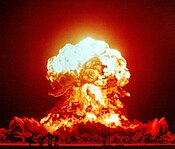
A feature of Western culture is its focus on science and technology, and its ability to generate new processes, materials and material artifacts.[39]
It was the West that first developed steam power and adapted its use into factories, and for the generation of electrical power.[40] The electrical motor, dynamo, transformer, and electric light, and indeed most of the familiar electrical appliances, were inventions of the West. The Otto and the Diesel internal combustion engines are products whose genesis and early development were in the West. Nuclear power stations are derived from the first atomic pile constructed in Chicago in 1942.
Communication devices and systems including the telegraph, the telephone, radio, television, communication and navigation satellites, mobile phone, and the Internet were all invented by Westerners.[41] The pencil, ballpoint pen, CRT, LCD, LED, photograph, photocopier, laser printer, ink jet printer, plasma display screen and world wide web were also invented in the West.
Ubiquitous materials including concrete, aluminum, clear glass, synthetic rubber, synthetic diamond and the plastics polyethylene, polypropylene, PVC and polystyrene were invented in the West. Iron and steel ships, bridges and skyscrapers first appeared in the West. Nitrogen fixation and petrochemicals were invented by Westerners. Most of the elements, were discovered and named in the West, as well as the contemporary atomic theories to explain them.
The transistor, integrated circuit, memory chip, and computer were all first seen in the West. The ship's chronometer, the screw propeller, the locomotive, bicycle, automobile, and aeroplane were all invented in the West. Eyeglasses, the telescope, the microscope and electron microscope, all the varieties of chromatography, protein and DNA sequencing, computerised tomography, NMR, x-rays, and light, ultraviolet and infrared spectroscopy, were all first developed and applied in Western laboratories, hospitals and factories.
In medicine, vaccination, anesthesia, and all the pure antibiotics were created in the West. The method of preventing Rh disease, the treatment of diabetes, and the germ theory of disease were discovered by Westerners. The eradication of that ancient scourge, smallpox, was led by a Westerner, Donald Henderson. Radiography, Computed tomography, Positron emission tomography and Medical ultrasonography are important diagnostic tools developed in the West. Other important diagnostic tools of clinical chemistry including the methods of spectrophotometry, electrophoresis and immunoassay were first devised by Westerners. So were the stethoscope, electrocardiograph, and the endoscope. Vitamins, hormonal contraception, hormones, insulin, Beta blockers and ACE inhibitors, along with a host of other medically proven drugs were first utilised to treat disease in the West. The double-blind study and evidence-based medicine are critical scientific techniques widely used in the West for medical purposes.
In mathematics, calculus, statistics, logic, vectors, tensors and complex analysis, group theory and topology were developed by Westerners. In biology, evolution, chromosomes, DNA, genetics and the methods of molecular biology are creatures of the West. In physics, the science of mechanics and quantum mechanics, relativity, thermodynamics, and statistical mechanics were all developed by Westerners. The discoveries and inventions by Westerners in electromagnetism include Coulomb's law (1785), the first battery (1800), the unity of electricity and magnetism (1820), Biot–Savart law (1820), Ohm's Law (1827), and the Maxwell's equations (1871). The atom, nucleus, electron, neutron and proton were all unveiled by Westerners.
In finance, double entry bookkeeping, the limited liability company, life insurance, and the charge card were all first used in the West.
Westerners are also known for their explorations of the globe and Outer space. The first expedition to circumnavigate the Earth (1522) was by Westerners, as well as the first journey to the South Pole (1911), and the first moon landing (1969). The landing of robots on Mars (2004 and 2012) and on an asteroid (2001), and the Voyager explorations of the outer planets (Uranus in 1986 and Neptune in 1989 were significant recent Western achievements.
-
Mass Communications and the Internet
-
Aircraft and Space Travel
-
Automobiles and trains
-
Galileo Galilei, Polymath
-
Sir Isaac Newton, Mathematician
-
Dmitri Mendeleev, Chemist
-
Albert Einstein, Physicist
-
Sir Alexander Fleming, Biologist
-
Maria Skłodowska-Curie, Physicist–Chemist
-
Stephen Hawking, Physicist
Themes and traditions
Western culture has developed many themes and traditions, the most significant of which are:
- Greco-Latin classic letters, arts, architecture, philosophical and cultural tradition, that include the influence of preeminent authors such as Plato, Aristotle, Homer, Herodotus, and Cicero, as well as a long mythologic tradition
- A tradition of the importance of the rule of law which has its roots in Ancient Greece.
- The Catholic and Protestant Christian cultural tradition and ethic.
- Secular humanism, rationalism and Enlightenment thought, as opposed to traditionally preeminent Catholicism and Protestant Christianity, religious and moral doctrines in lifestyle. This set the basis for a new critical attitude and open questioning of religion, favouring freethinking and questioning of the church as an authority, which resulted in open-minded and reformist ideals inside, such as liberation theology, which partly adopted these currents, and secular and political tendencies such as laicism, agnosticism and atheism.
- Widespread usage of terms and specific vocabulary borrowed, based or derived from Greek and Latin roots or etymologies for almost any field of arts, science and human knowledge, becoming easily understandable and common to almost any European language, and being a source for inventing internationalized neologisms for nearly any purpose. It is not rare for full loan Latin phrases or expressions, such as in situ, habeas corpus or tempus fugit, to be in usage, many of them giving name to artistic or literary concepts or currents. The usage of such roots and phrases is standardized in giving official scientific names for biological species (such as Homo sapiens or Tyrannosaurus rex). This shows a reverence for these languages, called classicism.
- Generalized usage of some form of the Latin or Greek alphabet. The latter includes the standard cases of Greece and other derived forms, such as Cyrillic, the case of those Balkan and eastern Slavic countries of Christian Orthodox tradition, historically under the Byzantine and later Russian czarist or Soviet area of influence. Other variants of it are encountered for Gothic and Coptic alphabets, that historically substituted older scripts, such as Runic, and Demotic or Hieroglyphic systems.
- Scholasticism.
- Renaissance arts and letters.
- Natural law, human rights, constitutionalism, parliamentarism (or presidentialism) and formal liberal democracy in recent times — prior to the 19th century, most Western governments were still monarchies.
- A large influence, in modern times, of many of the ideals and values developed and inherited from Romanticism
- Several subcultures (sometimes deriving into urban tribes) and countercultural movements, such as hippie lifestyle or the New Age, that have left several influences on contemporary mainstream or subcultural tendencies (some of them, especially in the mainstream, can become merely aesthetic).
Widespread influence
Elements of Western culture have had a very influential effect on other cultures worldwide. People of many cultures, both Western and non-Western, equate modernization (adoption of technological progress) with Westernization (adoption of Western culture). Some members[who?] of the non-Western world, such as M. K. Gandhi, have suggested that the link between technological progress and certain harmful Western values provides a reason why much of "modernity" should be rejected as being incompatible with their vision and the values of their societies. These types of argument referring to imperialism and stressing the importance of freedom from it and the relativist argument that different cultural norms should be treated equally, are also present in Western philosophy.
Maps
-
Latin alphabet world distribution. The dark green areas shows the countries where this alphabet is the sole main script. The light green shows the countries where the alphabet co-exists with other scripts
-
Religions of the world, mapped by distribution.
-
Map showing relative degree of religiosity by country. Based on a 2006-2008 worldwide survey by Gallup.
-
Language families
See also
- Eastern world
- Western world
- Westernization
- Western religion
- Classical tradition
- The Enlightenment
- Culture during the Cold War
Books:
Notes
- ^ Orlandis, A Short History of the Catholic Church (1993), preface.
- ^ How The Catholic Church Built Western Civilization
- ^ Sailen Debnath, Secularism: Western and Indian, ISBN 9788126913664
- ^ Sailen Debnath, Secularism: Western and Indian, ISBN 9788126913664, Atlantic Publishers, New Delhi
- ^ Sailen Debnath, Secularism: Western and Indian, ISBN 9788126913664, Atlantic Publishers, New Delhi
- ^ Yin Cheong Cheng, New Paradigm for Re-engineering Education. Page 369
- ^ Ainslee Thomas Embree, Carol Gluck, Asia in Western and World History: A Guide for Teaching. Page xvi
- ^ Kwang-Sae Lee, East and West: Fusion of Horizons
- ^ "How The Irish Saved Civilisation", by Thomas Cahill, 1995
- ^ Davidson, Roderic H. (1960). "Where is the Middle East?". Foreign Affairs. 38 (4): 665–675. doi:10.2307/20029452. JSTOR 20029452.
{{cite journal}}: Invalid|ref=harv(help)CS1 maint: postscript (link) - ^ British archaeologist D.G. Hogarth published The Nearer East in 1902, which helped to define the term and its extent, including Albania, Montenegro, southern Serbia and Bulgaria, Greece, Egypt, all Ottoman lands, the entire Arabian Peninsula, and Western parts of Iran.
- ^ Barzun, p 73
- ^ Barzun, p 329
- ^ Barzun, p. 380
- ^ Dawson, Christopher (1961). Crisis in Western Education (reprint ed.). p. 108. ISBN 9780813216836.
{{cite book}}: Unknown parameter|coauthors=ignored (|author=suggested) (help) - ^ Koch, Carl (1994). The Catholic Church: Journey, Wisdom, and Mission. Early Middle Ages: St. Mary's Press. ISBN 9780884892984.
- ^ Koch, Carl (1994). The Catholic Church: Journey, Wisdom, and Mission. The Age of Enlightenment: St. Mary's Press. ISBN 9780884892984.
- ^ Koch, Carl (1994). The Catholic Church: Journey, Wisdom, and Mission. Early Middle Ages: St. Mary's Press. ISBN 9780884892984.
- ^ Dawson, Christopher (1961). Crisis in Western Education (reprint ed.). ISBN 9780813216836.
{{cite book}}: Unknown parameter|coauthors=ignored (|author=suggested) (help) - ^ Koch, Carl (1994). The Catholic Church: Journey, Wisdom, and Mission. High Middle Ages: St. Mary's Press. ISBN 9780884892984.
- ^ Koch, Carl (1994). The Catholic Church: Journey, Wisdom, and Mission. Renaissance: St. Mary's Press. ISBN 9780884892984.
- ^ Dawson, Christopher (1961). Crisis in Western Education (reprint ed.). p. 25. ISBN 9780813216836.
{{cite book}}: Unknown parameter|coauthors=ignored (|author=suggested) (help) - ^ Koch, Carl (1994). The Catholic Church: Journey, Wisdom, and Mission. Reformation: St. Mary's Press. ISBN 9780884892984.
- ^ Koch, Carl (1994). The Catholic Church: Journey, Wisdom, and Mission. Enlightenment: St. Mary's Press. ISBN 9780884892984.
- ^ a b Global Christianity
- ^ http://www.pewforum.org/Christian/Global-Christianity-europe.aspx Europe
- ^ http://www.pewforum.org/Christian/Global-Christianity-americas.aspx Americas
- ^ Zuckerman, P. 2005. "Atheism: Contemporary Rates and Patterns" Pitzer College. Retrieved: 2006-06-21.
- ^ Fraser, Barbara J., In Latin America, Catholics down, church's credibility up, poll says Catholic News Service June 23, 2005
- ^ "CIA — The World Factbook -- Field Listing — Religions". Retrieved 17 March 2009.
- ^ "Ancient Olympic Games".
- ^ Hill, p. 5
- ^ http://www.golf-information.info/history-of-golf.html History Of Golf
- ^ Hodges 1993, p. 2
- ^ Letts, Greg. "A Brief History of Table Tennis/Ping-Pong". About.com. The New York Times Company. Retrieved 29 August 2010.
- ^ [1]"
- ^ "What it was was Football!". Georgetown Magazine. Georgetown University Library Special Collections. Retrieved 7 February 2010.
- ^ Bath, Richard (ed.) The Complete Book of Rugby (Seven Oaks Ltd, 1997 ISBN 1-86200-013-1) p77
- ^ Holmes, Richard (2008). The Age of Wonder: How the Romantic Generation Discovered the Beauty and Terror of Science. New York: Pantheon Books. ISBN 978-0-375-42222-5Template:Inconsistent citations
{{cite book}}: Invalid|ref=harv(help)CS1 maint: postscript (link) - ^ Jonnes, Jill (1997). Empires of Light: Edison, Tesla, Westinghouse and the Race to Electrify the World. New York: Norton. ISBN 0-393-04124-7Template:Inconsistent citations
{{cite book}}: Invalid|ref=harv(help)CS1 maint: postscript (link) - ^ Riordan, Michael (2003). Crystal Fire: The Birth of the Information Age. New York: Random House. ISBN 0-375-50739-6Template:Inconsistent citations
{{cite book}}: Invalid|ref=harv(help)CS1 maint: postscript (link)
References
- Sailen Debnath, "Secularism: Western and Indian,", ISBN 978-81-269-1366-4, Atlantic Publishers, New Delhi
- Jones, Prudence and Pennick, Nigel A History of Pagan Europe Barnes & Noble (1995) ISBN 0-7607-1210-7.
- Ankerl, Guy (2000) [2000]. Global communication without universal civilization. INU societal research. Vol. Vol.1: Coexisting contemporary civilizations : Arabo-Muslim, Bharati, Chinese, and Western. Geneva: INU Press. ISBN 2-88155-004-5Template:Inconsistent citations
{{cite book}}:|volume=has extra text (help); Invalid|ref=harv(help)CS1 maint: postscript (link) - Barzun, Jacques From Dawn to Decadence: 500 Years of Western Cultural Life 1500 to the Present HarperCollins (2000) ISBN 0-06-017586-9.
- Merriman, John Modern Europe: From the Renaissance to the Present W. W. Norton (1996) ISBN 0-393-96885-5.
- Derry, T. K. and Williams, Trevor I. A Short History of Technology: From the Earliest Times to A.D. 1900 Dover (1960) ISBN 0-486-27472-1.
- Eduardo Duran, Bonnie Dyran Native American Postcolonial Psychology 1995 Albany: State University of New York Press ISBN 0-7914-2353-0
- McClellan, James E. III and Dorn, Harold Science and Technology in World History Johns Hopkins University Press (1999) ISBN 0-8018-5869-0
- Stein, Ralph The Great Inventions Playboy Press (1976) ISBN 0-87223-444-4.
- Asimov, Isaac Asimov's Biographical Encyclopedia of Science and Technology: The Lives & Achievements of 1510 Great Scientists from Ancient Times to the Present Revised second edition, Doubleday (1982) ISBN 0-385-17771-2.
- Pastor, Ludwig von, History of the Popes from the Close of the Middle Ages; Drawn from the Secret Archives of the Vatican and other original sources, 40 vols. St. Louis, B. Herder (1898ff.)
- Walsh, James Joseph, The Popes and Science; the History of the Papal Relations to Science During the Middle Ages and Down to Our Own Time, Fordam University Press, 1908, reprinted 2003, Kessinger Publishing. ISBN 0-7661-3646-9 Reviews: P.462 [2]
- [Ankerl, Guy] (2000) :Coexisting Civilizations: Arabo-Muslim, Bharati, Chinese, and Western. INUPRESS, Geneva,119-244. ISBN 2-88155-004-5
- Duchesne, Ricardo (2011): The Uniqueness of Western Civilization, Studies in Critical Social Sciences, Vol. 28, Leiden and Boston: Brill, ISBN 978-90-04-19248-5
- Hanson, Victor Davis; Heath, John (2001): Who Killed Homer: The Demise of Classical Education and the Recovery of Greek Wisdom, Encounter Books
- Stearns, P.N. (2003): Western Civilization in World History, Routledge, New York
- Thornton, Bruce (2002): Greek Ways: How the Greeks Created Western Civilization, Encounter Books



















